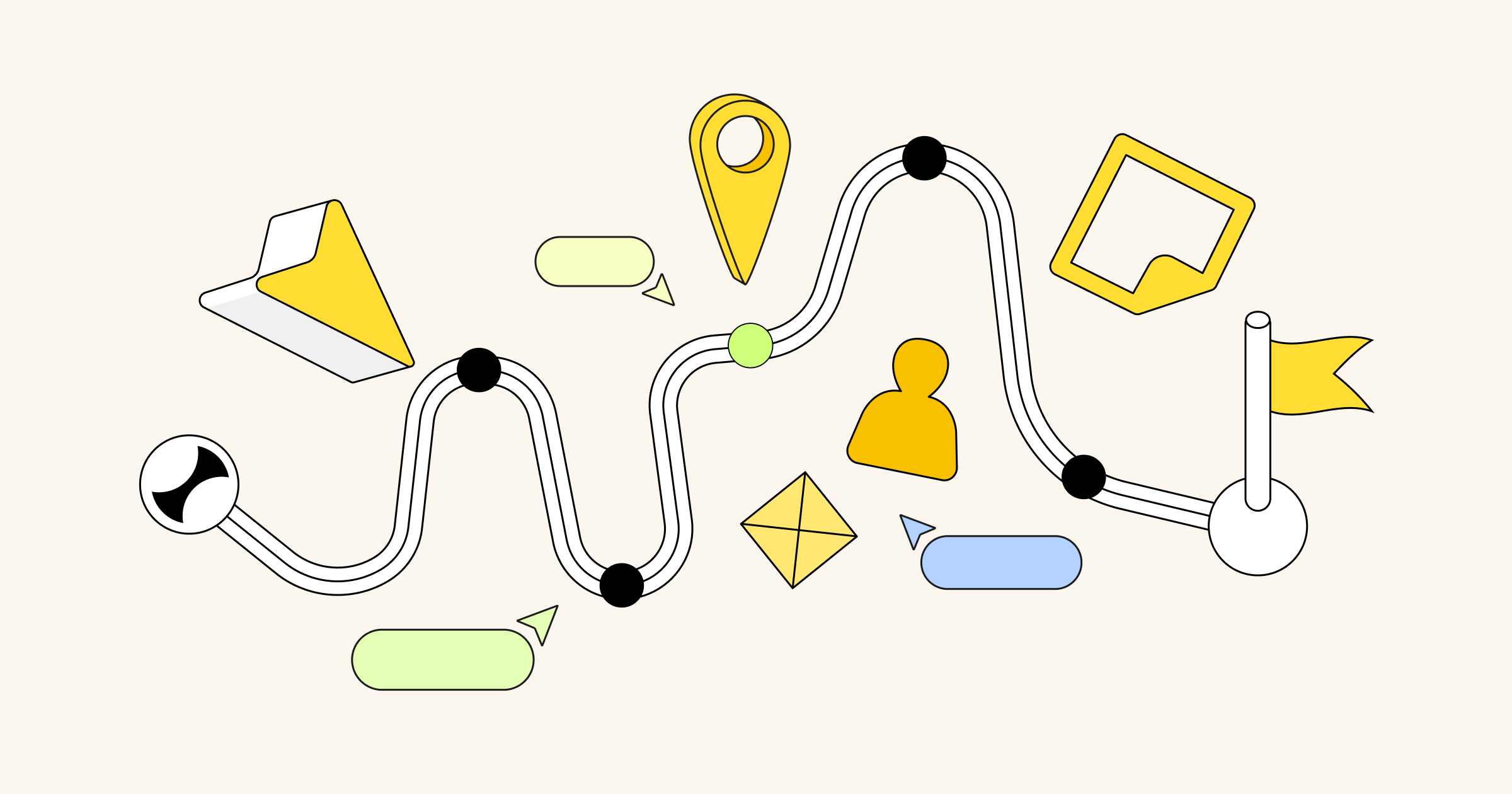Over the past few months, we’ve seen the world change before our eyes. Here at Miro, we’ve seen first-hand how collaboration habits have evolved as companies worldwide have shifted to remote work. The differences are evident in how teams are using our product, every day.
We’ve been closely observing these developments and identifying ways to respond to them. I’ll provide a snapshot of some of the trends we’re seeing and give a peek into how we’re adapting our product roadmap to meet our users’ changing needs.
Try Miro’s product roadmap templates.
Trend 1: Miro users collaborate more than ever
Between the beginning of March and mid-June, we saw a 166% increase in returned weekly active teams and a 236% growth in weekly active users. What’s more, there were 126% more collaborative boards at the end of the second week of June, compared to the first week of March.
Both distributed and co-located teams have always used Miro as a space to collaborate. But now that the opportunities for gathering around a trusty office whiteboard with a dry-erase marker are limited, additional folks are turning to the online equivalent.
Trend 2: Teams tend to collaborate in real time
Previous to the shift to remote work, roughly 50% of Miro boards were used for real-time synchronous collaboration in a given week. Since March, between 64% and 67% of Miro boards have been used by teams to work together at the same time.
It’s clear: there’s a strong demand for tools that allow multiple people to work together, in real time — whether it’s for brainstorming, mapping out a process, running a retrospective, moving tasks along a Kanban board, or something else. We’re seeing more users replicating their formerly in-person meetings and workshops in front of a physical whiteboard online in Miro.
Trend 3: More people are coming together to work online
Sessions with 10-19 simultaneous collaborators on a board in a given week grew 943% by mid-June, compared to the beginning of March, while sessions with 20-29 simultaneous collaborators on a board in a given week grew by 2389% over the same period of time. Since the beginning of March we also started consistently seeing massive collaborative sessions with one, two, and even three hundred users collaborating simultaneously on one board.
We’re not only seeing an increase in the scale of these sessions but hearing feedback about the benefits of the online format for large events. Miro’s visual workspace allows every participant the opportunity to contribute directly, vote, and have their voice heard visually in a way that can’t be achieved in person. This leads to an overall increase in engagement and more diverse ideas being heard.
Trend 4: Miro users are creating more content than ever
Users created 162% more sticky notes in May (49.5 million) than in March (18.9 million). Wow, that’s a lot of stickies!
One of the concerns about remote work is that it could hamper people’s engagement – but we’ve seen that’s clearly not the case! Sticky notes are at the heart of how so many people use Miro to share their thoughts, ideas, and feedback with each other – and they aren’t holding back.
Trend 5: More video chatting than ever before
The total time spent using our built-in video chat increased by 428% in May, compared with March (or by a whopping 4913% – if compared with February data).
There’s no replacing a human connection. And it seems more people are turning to video to recreate their “face time” with teammates. The combination of video and cursor tracking in Miro seems to be that secret combination to replicating the feeling of working together side by side.
How understanding these trends helped us make better product decisions
One trend we’ve noted and worked quickly to accommodate is an increase in different types of collaborators who are using Miro for their work. With the shift to remote work, different types of people – teachers and educators who are using our free Education Plan, for example – are navigating boards for the first time. We’re also seeing an uptick in developers and Agile coaches.
We’ve also identified a new type of user we call the “novice facilitator”: anyone who is used to running meetings in person, but is now looking to recreate the experience with a remote group.
Here is how we leveraged these insights to inform our product roadmap:
Performance and collaboration at scale
Since users are turning to our platform for real-time collaboration, organizing massive brainstorming sessions, PI Planning, and other team activities, we prioritized the stability and scalability of Miro over other initiatives that were initially planned for the first half of 2020.
It was challenging to reprioritize product increments and reorganize our internal teams while also adapting to 100% remote work ourselves.
One step that helped align Product and Engineering teams around the same goal and motivated everyone to move fast was making all of the data (from the number of newly registered users and daily active users to service capacity predictions) readily available.
Weeks of dedicated work paid off: the largest session Miro seamlessly supported so far had 370+ users collaborating simultaneously on the same board. Meanwhile, we’ve been hosting hundreds of other sessions that incorporate 200+ users working in real time.
Find out more about collaborating with multiple participants in Miro in the Technical Guidelines section of our Help Center.
Holistic UX improvements program
Many of those who started using Miro between February and June had little to no experience with canvas freeform collaboration tools.
That’s why we decided to audit our UX and UI to ensure that everyone from our most committed power users to first-time workshop facilitators have the same great experience with our product.
Then, we put several initiatives on hold to roll out a major program involving six product teams. Everyone in the company had a chance to pitch an idea on how the product UX could be improved. We compiled the requests along with user insights aggregated by our Customer Success and Customer Support teams and rolled everything into a UX improvements backlog.
Features and improvements with the highest priority were shipped within the first 30 days of the initiative, while the rest of them will be gradually implemented later this year.
Curious to learn about the highlights of the UX program? Visit our Changelog – a running list of new features and improvements updated weekly on Mondays.
Focus on remote meetings and workshops
Remote meetings and workshops have become one of the biggest use cases in Miro for the past few months.
Back in February we had a complete solution with built-in video chat, timer, voting that was successfully used by thousands of teams, and plans to take it to the next level within the next two to three months.
Increased demand and feedback from our users informed our decision to fast track certain features and ship them ASAP.
We added the ability to invite anonymous Guest Editors to publicly shared boards and powerful facilitation features in a matter of weeks, which unlocked advanced possibilities for users looking for a one-stop workshops solutions.
We got a ton of positive feedback from our users, which inspired our product team to start researching, designing, and developing 10+ additional features that will help our users run even better workshops and meetings in Miro.ite
In the meantime, we encourage you to check out our tips on how to run engaging workshops using Miro.




